Skin Cancer
ARM Yourself with the facts
According to the Skin Cancer Foundation one in five Americans will get some form of skin cancer in their lifetime and there are more cases of skin cancer each year than all other cancers combined. As the entire Bahamas is located in a tropical climate zone our skin cancer rate is probably even higher. The vast majority of skin cancers are one of three types:
Basal Cell Carcinoma (BCC)
Squamous Cell Carcinoma (SCC)
Melanoma
Reproduced from the Mayo Foundation of Cancer Research
Basal cell carcinoma, the most common type of skin cancer, arises from the cells at the base of the epidermis.
Squamous cell carcinoma, the second most common type, arises from the cells that are found more superficially in the epidermis.
Melanoma is a malignancy of the pigment cells - melanocytes.
Basal Cell carcinoma is overwhelmingly the most common type of skin cancer. About 4.3 million cases are diagnosed in the United States each year. It is more than four times as common as squamous cell carcinoma. Melanoma is fortunately far less common, representing less than 1% of the total number of skin cancers.
Reproduced from the Mayo Foundation of Cancer Research
Melanoma
Although melanoma is the least common of the three main types of skin cancer, it causes by far the most deaths. It is estimated that two people die of melanoma every hour in the United States. This is due to the fact that of the various types of skin cancer, melanoma has the highest propensity to metastasize (spread to other organs). Once it has spread, less than 1 in 5 persons will survive over 5 years. Having said that, melanoma is entirely curable if caught early. So proper surveillance is critical. The best ways to monitor for melanoma is with monthly self exams and annual comprehensive skin cancer screening.
Keep in mind the ABCDE’s of melanoma. Learning these early warning signs for melanoma can save your life or the life of someone you love:
ABCDE’s of Melanoma
Click on image to enlarge.
Basal Cell Carcinoma
Basal cell carcinoma is the most common type of skin cancer. Fortunately it is also the least dangerous as it usually does not spread to other organs. The most common challenge with basal cell carcinoma is that it slowly erodes the surrounding normal tissue. This is especially problematic when it occurs on or near to critical structures such as the eyes, nose or ears.
Basal cell carcinoma typically appears as a smooth, pink, translucent “pearly” bump with dilated blood vessels visible on its surface. However it can vary in appearance as seen below. One clue to the diagnosis is the tendency to bleed on slight contact such as drying an affected area with a towel. Dermoscopy significantly aids the early diagnosis of BCC.
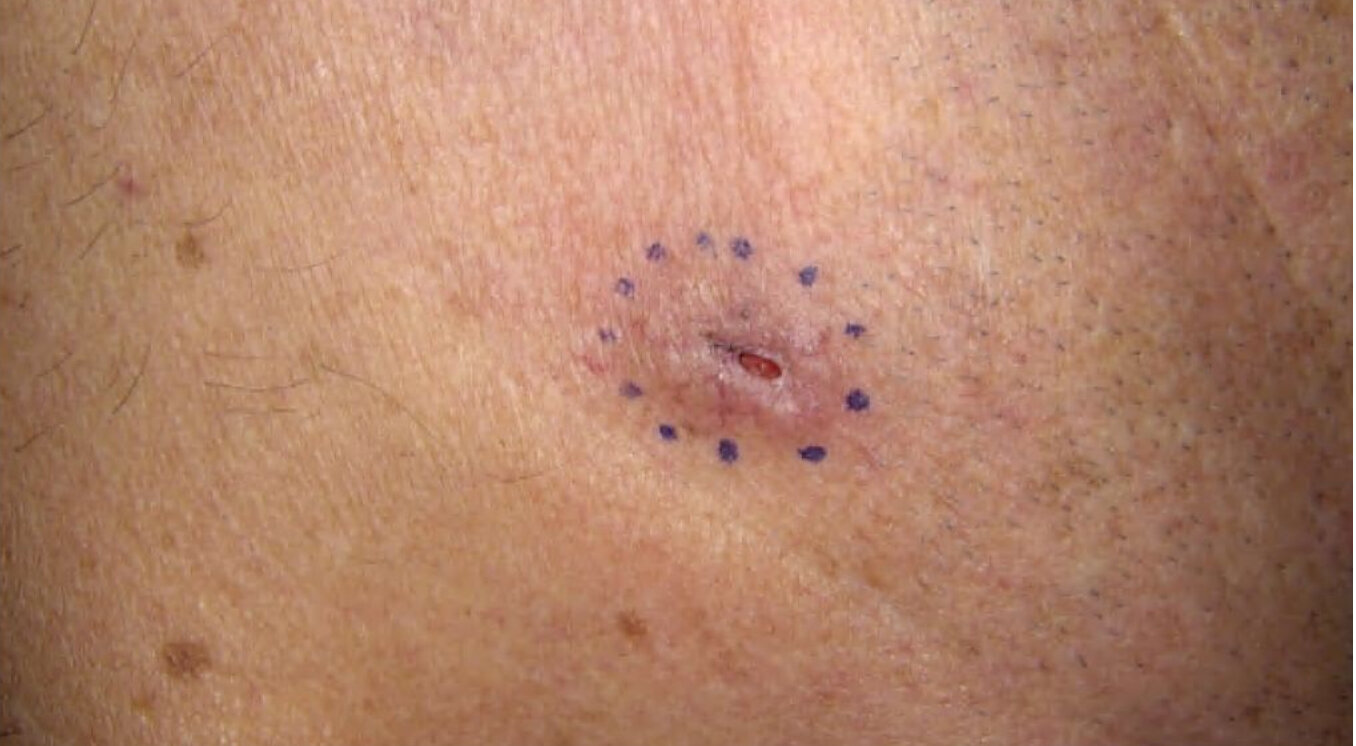
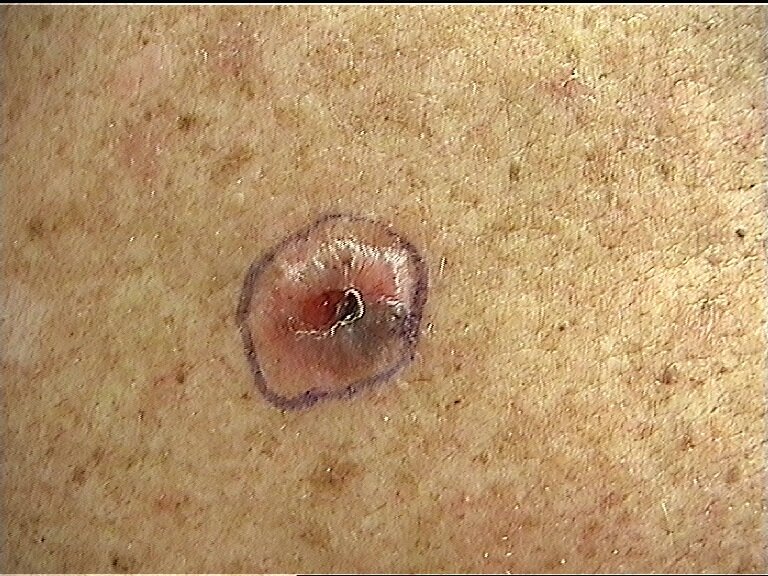
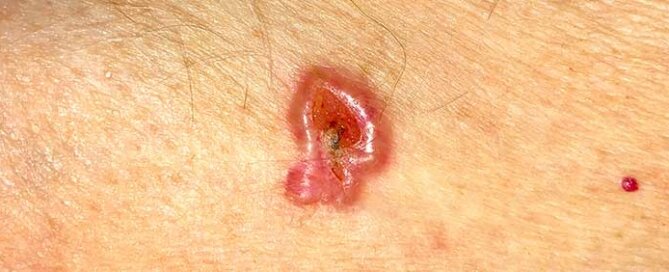
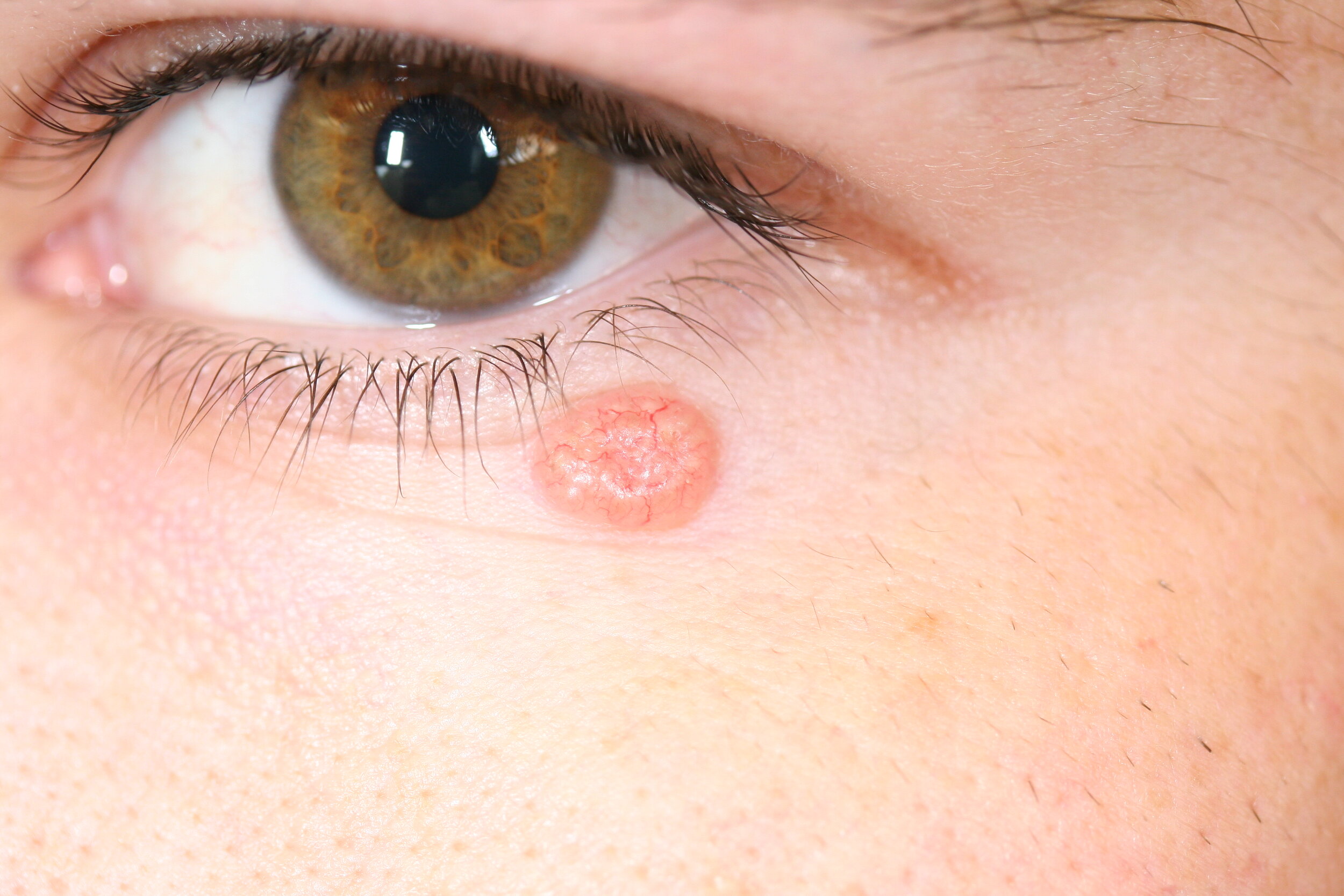
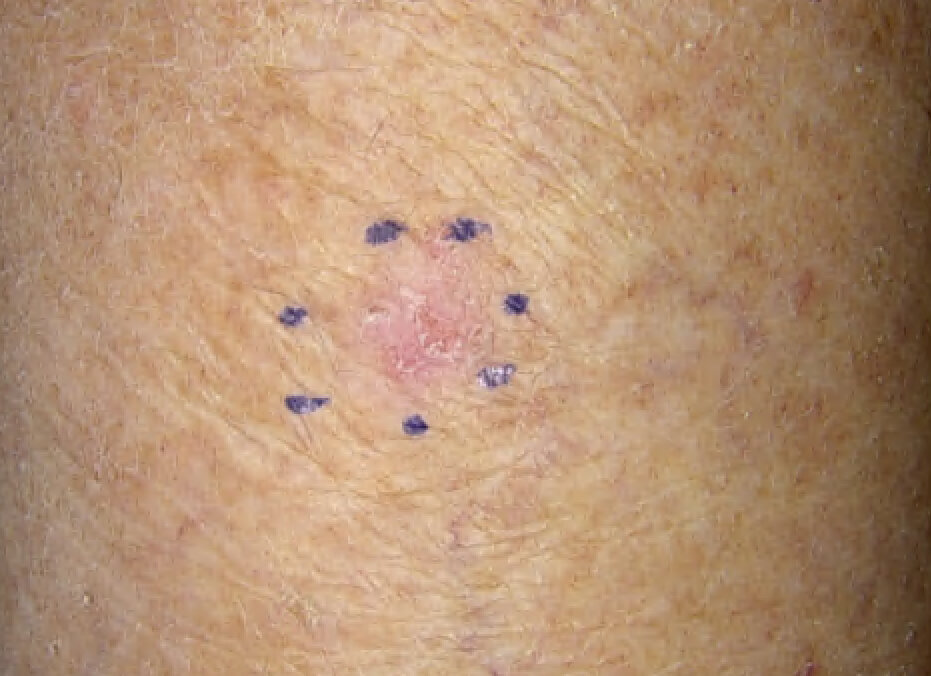
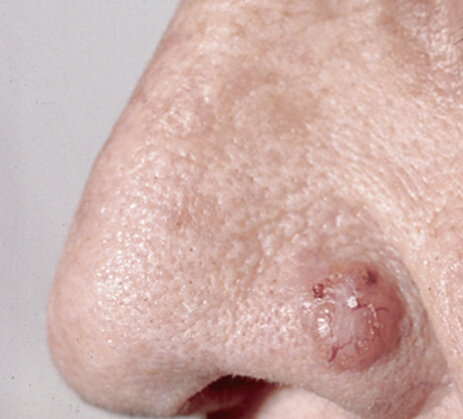
Squamous Cell Carcinoma
Squamous cell carcinomas (SCCs) typically appear as pink, scaly, or warty growths and are about four times less prevalent than basal cell carcinomas (BCC). While SCCs are less prone to spreading to other organs than melanoma, there is certainly a risk of spread, particularly in areas like the lips and oral cavity and if left untreated for prolonged periods.
Actinic keratosis (AK), a precursor to SCC, often precedes its development, allowing for early detection and treatment. Like SCC, AKs are hard scaly growths that occur predominantly on sun exposed areas of the body. AKs are often detectable by touch before becoming clearly visible.
Photo by jamesbenet/iStock / Getty Images
(Photos of SCC and AKs)
Prevention - the best defense
SUN PROTECTION: Large population studies have confirmed what we long suspected: excessive sun exposure leads to DNA damage in the skin and eyes, leading to mutations and cancer development years later.
VITAMIN D levels: While excessive ultraviolet B radiation can be harmful, it also paradoxically stimulates the production of vitamin D in the skin, which is essential for various aspects of health, including immune defense against cancer.
It's advisable to prevent sunburn, but total sun avoidance is not recommended. Early morning and late afternoon exposure to sunlight, with reduced ultraviolet radiation and increased infra-red exposure, may provide health benefits, including some level of sun protection.
It's advisable to prevent sunburn, but total sun avoidance is not recommended. In fact early morning and late afternoon exposure to sunlight, when there is reduced ultraviolet radiation and increased infra-red exposure, may provide health benefits, including some level of sun protection.
Meticulous Surveillance
Comprehensive Skin Cancer Screening
The Skin Centre has a long standing commitment to provide the highest standards in skin cancer surveillance and treatments. As you may know, we have utilized the highly respected FotoFinder platform for photo documentation of skin changes for almost 20 years now. In 2016 we introduced the Automated Total Body Mapping or ATBM system that is considered the optimal standard of care for mole mapping and skin cancer surveillance. This is the most advanced technology available to monitor for suspicious changes in your skin, especially melanoma.
Digital Dermoscopy
Coupled with our ATBM mole mapping, we also perform digital dermoscopy examination. This is a very helpful tool which increases diagnostic accuracy. It facilitates early detection and distinction of various skin cancers AND allows us to avoid unnecessary intervention when lesions are clearly benign based on dermoscopy features.
Comprehensive Treatment Options
Excisional Surgery
Mohs Micrographic Surgery
Photodynamic Therapy
Cryosurgery
Topical Anti-Cancer Agents



